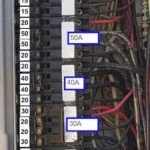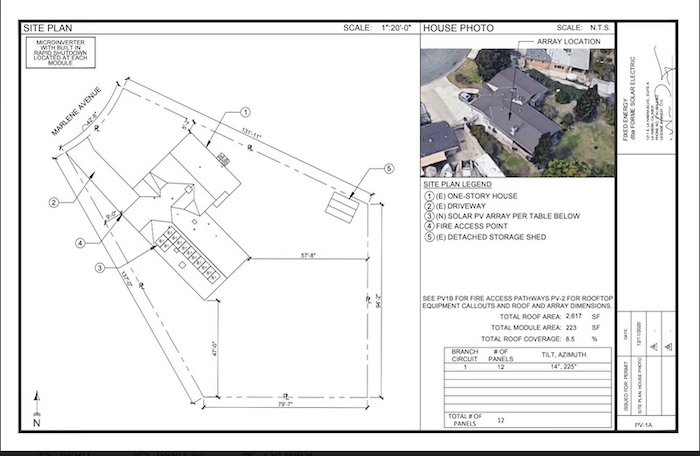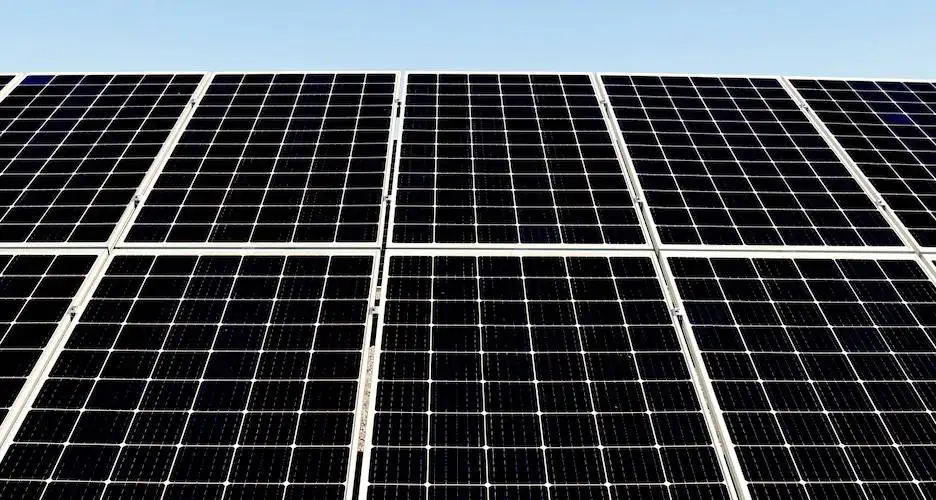
Table of Contents
How Long Does it Take to Install Solar Panels?
When getting solar for your home, you may want to know how long it will take to fully complete the solar process. The goal is to switch to solar energy as quickly as possible to start offsetting your electricity costs. One of our key differentiators is to understand the solar process, to minimize the time it takes for our customers to reap the benefit of home solar. Read on to see how long it takes to install solar panels and the common factors that can impact the timeline.
Breakdown of Solar Installation Process

The entire process for installing solar panels and getting them approved isn’t an overnight process. Going solar in California takes approximately 45 days from the time a signed contract is submitted. While this may feel like a long time to some, it is entirely worth it when you have strong project communication and professional installation partners. Most of the delay is actually due to the permit process and waiting for the utility company to process your solar billing application.
While you are not expected to get directly involved with the installation process, making sure you understand your project’s happening is our number one priority. Following is a breakdown of what a homeowner can expect after committing to going solar with Forme Solar. The timeline for going solar can vary depending on where you live, your solar company, the solar panels you choose, and if you are also installing a new service panel or battery backup.
Step 1: Site Assessment
Once you choose a solar company, one of the first steps in getting your site assessed to ensure it is ready and safe for solar. A professional site assessor from our company will visit your home and examine the roof and other features to make sure they can support a solar system. The three key areas that we look for during a site assessment are:
1. Your Existing Service Panel
2. Roof Condition and Paper
3. Roof Dimensions, Vent Locations, Shading
Our goal is to ensure that your roof can handle the weight of the solar panels and your electrical panel can safely take the amount of energy you want to produce. The experts will also make sure nothing is obstructing your solar panels from getting the maximum amount of sunlight exposure and confirming that we can fit the number of solar panels proposed.
On the day of your Site Assessment, a professional assessor will arrive to collect any HOA documents and survey the site, take roof and sunlight measurements, and note any possible repairs or upgrades that need to be made to accommodate your solar system.
From the moment that the contract is signed to scheduling the site visit, it can take roughly one (1) week.
Step 2: System Design & Engineering
Using the site assessment data, a team of engineers will verify the designs and adjust the plans to meet local code requirements. A design engineer will then verify and approve the solar building plans to be submitted to the city for permits. We provide full support with all of our customer’s design and engineering needs. By specializing in engineering and design for residential homes, we understand the permit process well. This minimizes the time that the city requires to review the plans and minimizes the chances for corrections to occur.
Every project is uniquely designed, and every city has specific rules, regulations, and procedures to ensure that your system meets the guidelines set forth by the city. Our engineers’ primary focus is to meet city regulations, and our second priority is to maximize our customers’ return on investment.
Before we apply for permits, we will confirm the overall layout with our customers to ensure that the system design correctly matches expectations. A design engineer will then verify and approve the plans to be submitted to the city for permits.
Step 3: Solar Permit Application
To install solar panels on your home, you have to get the correct permits, as you would for any construction project. This is especially important because you won’t be able to apply for solar billing without final approval from your city’s Building and Safety Department. Even if you don’t have a permitted service panel, that will need to get permitted in your process to get solar.
Getting the permit from your city for your Solar Energy System is the longest part of the solar installation process. The permits required to install solar for your home will vary based on your city’s Building and Safety department. In most cases, you will need to obtain a Solar PV Permit and an Electrical Permit. It typically takes 2-4 weeks, and we have seen it even take up to 4 months. With COVID-19, cities have had to change their process and may only accommodate a limited number of in-person appointments.
Step 3: Solar Panel Installation
Once your permit has been issued, your solar installation company will schedule a date to install the equipment on your roof. The installation itself is typically the quickest step, to most people’s surprise. A typical install will take between 4-6 hours, depending on system size. You only need to be there if access needs to be granted to install equipment in the garage, for example.
Depending on the solar energy system’s size, most home solar panels can be installed in a single day. Our installers arrive with all of the equipment from solar panels, solar inverter, wiring, cables, and racking. The first step for the installation will be to work on the electrical wiring and finishes by installing the solar panels. If your solar energy system is comprised of a lot of solar panels, is on multiple different roof plans, or has a complicated roof, it could be extended over a few days.
Depending on your home solar system and roof’s size, this step can take 1 or 2 days.
Step 4: Final Inspection and City Approval

Once installation complete, our team will call the city to arrange for an inspection. A city building inspector will need to visit the site to ensure that the solar panels were installed correctly and city code. This is an essential step since it ensures that the solar energy system was installed correctly, safely, and with the equipment that matches the approved engineering plans. With solar energy, you are essentially installing a power plant on the top of your roof, and so it is vital that the city checks to ensure everything was done correctly and safely.
Some cities and jurisdictions may require additional inspections beyond the City’s Building and Safety Department. For example, in Chino Hills, California, you will need a Fire Department Inspection before obtaining Final Approval from Chino Hill’s Building and Safety department.
Chula Vista, California in SDG&E territory requires that a final signoff for SDG&E requires an inspection request that includes a request to Unlock the Electrical Meter. By failing to request the right inspections can lead to an additional inspection being required.
On the day of inspection, a technician will be sent to your property to wait for the inspector and walk them through the install. Corrections can occur, and they must be addressed right away. The inspection stage can vary depending on the time of year and how backlogged the city is for inspections.
Depending on your city’s building and safety department and how quickly the inspector can come, this step can take up to 1 week. If there are any corrections, it could take longer.
Step 4: Permission-to-Operate with the Utility Company
Even after you get your permit fully issued and finalized, you have one last major step to get your solar energy system activated. The final step is to apply with your utility company to switch you over to solar billing. Once the utility company receives the solar billing application with the signed off job card from the city inspection, they will notify you and our installation team of their approval to grant you Permission-to-Operate.
Solar billing, or more accurately, net energy metering (NEM), is a billing mechanism that allows the owner of a Solar Photovoltaics (PV) System to store energy in the electric grid. When your solar panels generate more electricity than what you need, that energy will be sent to the grid in exchange for credits. So even if your solar energy system is on, you won’t be receiving a credit for any excess that you sell back to your utility company until you complete this final step.
Depending on your utility company, this step can take a week to a month.
Factors that Impact How Long It Takes to Go Solar
Solar installation can take as little as three (3) weeks to several months to complete. Certain factors can add a considerable amount of time and delay to your solar energy project. The most significant factors that add to delays are:
HOA Approval
Because solar panels are a significant change to your home, your homeowner’s association (HOA) may also want to be notified and require an approval process.
Main Panel Upgrade
43% of our customers have required a main panel upgrade from a 125A service panel to a 200A electrical panel. With a service panel, it adds additional steps to going solar and requires an additional electrical permit. A main panel upgrade also requires 2-3 inspections with the city. A pre-lath inspection, a rough inspection, and a final inspection.
Roof Repair
Even though your solar energy system is designed to last for 25 years, your roof may not be. Our company’s policy is that if your roof looks like it has less than ten (10) years until it needs repair, we recommend roof repair. Your roof repair can require a permit, which will further extend your solar installation project’s timeline.
Unpermitted Structures and Service Panel
Any unpermitted structures or an unpermitted main service panel can create substantial delays regarding your solar energy project. To get approval from the city, they require that all of the work done on your home is permitted or the unpermitted work is removed.
Solar Equipment Availability
With COVID-19 and the seasonality of solar, the availability of your solar equipment may be impacted. Specific solar panels, inverters, and key solar components may no longer have stock by the time your installation is scheduled to occur. Specialized parts may need to be ordered if they aren’t in stock. This will add time to your solar energy system's installation. When trying to use equipment that is different from your original plans, you may need to submit a new set of plans with the city’s Building and Safety department.
Going Solar For Your Home is Worth Waiting For!
Going solar may seem like a long time, but that shouldn’t stop you from switching to solar energy. Utility companies are consistently raising their electricity rates, and by going solar, you will save money on your electricity bills. Electricity costs will not go down and will not go away. By going solar, you can lock in the cost of electricity for years to come.


















